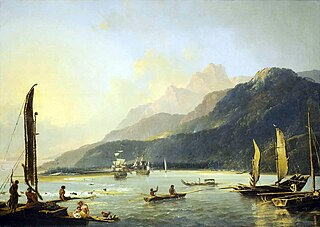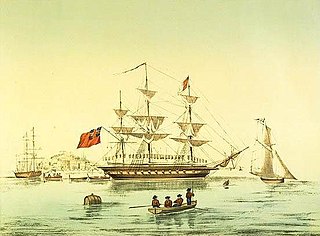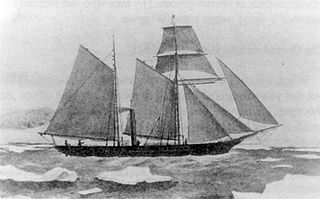 W
WHMS Adventure was a barque that the Royal Navy purchased in 1771. She had been the merchant vessel Marquis of Rockingham, launched in 1770 at Whitby. In naval service she sailed with Resolution on James Cook's second expedition to the Pacific in 1772–1775. She was the first ship to circumnavigate the globe from west to east. After her return she served as a store ship until 1779. The navy sold her in 1783 and she resumed a civilian career, but retaining the name Adventure. She was lost in May 1811.
 W
WHMS Assistance was an Arctic discovery barque of the Royal Navy, and the sixth vessel to carry the name. She began in 1834 as the India-built merchant vessel Acorn. Her name was changed to Baboo. Under that name she transported coolies between Mauritius and India, and immigrants to South Australia. The Royal Navy purchased her in 1850 and named her HMS Assistance. Assistance participated in two Arctic expeditions before her crew abandoned her in the ice in 1854.
 W
WSY Aurora was a 580-ton barque-rigged steam yacht built by Alexander Stephen and Sons Ltd. in Dundee, Scotland, in 1876, for the Dundee Seal and Whale Fishing Company. It was 165 feet (50 m) long with a 30-foot (9.1 m) beam. The hull was made of oak, sheathed with greenheart and lined with fir. The bow was a mass of solid wood reinforced with steel-plate armour. The heavy side frames were braced by two levels of horizontal oak beams. Her primary use was whaling in the northern seas, and she was built sturdily enough to withstand the heavy weather and ice that would be encountered there. That strength proved useful for Antarctic exploration as well and between 1911 and 1917 she made five trips to the continent, both for exploration and rescue missions.
 W
WHMS Beagle was a Cherokee-class 10-gun brig-sloop of the Royal Navy, one of more than 100 ships of this class. The vessel, constructed at a cost of £7,803, was launched on 11 May 1820 from the Woolwich Dockyard on the River Thames. Later reports say the ship took part in celebrations of the coronation of King George IV of the United Kingdom, passing through the old London Bridge, and was the first rigged man-of-war afloat upriver of the bridge. There was no immediate need for Beagle so she "lay in ordinary", moored afloat but without masts or rigging. She was then adapted as a survey barque and took part in three survey expeditions.
 W
WHMS Blonde was a 46-gun modified Apollo-class fifth-rate frigate of 1,103 tons burthen. She undertook an important voyage to the Pacific Ocean in 1824. She was used for harbour service from 1850 and was renamed HMS Calypso in 1870, before being sold in 1895.
 W
WHMS Challenger was a steam-assisted Royal Navy Pearl-class corvette launched on 13 February 1858 at the Woolwich Dockyard. She was the flagship of the Australia Station between 1866 and 1870.
 W
WHMS Discovery was a Royal Navy ship launched in 1789 and best known as the lead ship in George Vancouver's exploration of the west coast of North America in his famous 1791-1795 expedition. She was converted to a bomb vessel in 1798 and participated in the Battle of Copenhagen. Thereafter she served as a hospital ship and later as a convict ship until 1831. She was broken up in 1834.
 W
WHMS Discovery was the consort ship of James Cook's third expedition to the Pacific Ocean in 1776–1780. Like Cook's other ships, Discovery was a Whitby-built collier originally named Diligence when she was built in 1774. Purchased in 1775, the vessel was measured at 299 tons burthen. Originally a brig, Cook had her changed to a full-rigged ship. She was commanded by Charles Clerke, who had previously served on Cook's first two expeditions, and had a complement of 70. When Cook was killed in a skirmish with natives of Hawaii, Clerke transferred to the expedition's flagship HMS Resolution and John Gore assumed command of Discovery. She returned to Britain under the command of Lieutenant James King, arriving back on 4 October 1780.
 W
WRRS Discovery is a barque-rigged auxiliary steamship built for Antarctic research, and launched in 1901. She was the last traditional wooden three-masted ship to be built in the United Kingdom. Her first mission was the British National Antarctic Expedition, carrying Robert Falcon Scott and Ernest Shackleton on their first, and highly successful, journey to the Antarctic, known as the Discovery Expedition.
 W
WHMS Dolphin was a 24-gun sixth-rate frigate of the Royal Navy. Launched in 1751, she was used as a survey ship from 1764 and made two circumnavigations of the world under the successive commands of John Byron and Samuel Wallis. She was the first ship to circumnavigate the world twice. She remained in service until she was paid off in September 1776, and she was broken up in early 1777.
 W
WHMS Endeavour, also known as HM Bark Endeavour, was a British Royal Navy research vessel that Lieutenant James Cook commanded to Australia and New Zealand on his first voyage of discovery from 1768 to 1771.
 W
WHMS Enterprise was an Arctic discovery ship laid down as a merchant vessel and purchased in 1848 before launch to search for Sir John Franklin's lost expedition. She made two Arctic voyages before becoming a coal depot, and was finally sold in 1903. She was the tenth Enterprise to serve in the Royal Navy.
 W
WHMS Erebus is a Hecla-class bomb vessel constructed by the Royal Navy in Pembroke dockyard, Wales, in 1826. The vessel was the second in the Royal Navy named after Erebus, the dark region of Hades in Greek mythology.
 W
WHMS Fly was an 18-gun sloop of the Royal Navy. She was responsible for the exploration and charting of much of Australia's north-east coast and nearby islands. She was converted to a coal hulk in 1855 and broken up in 1903.
 W
WThe Fox was an 1854 steam yacht commanded by Leopold McClintock on a privately funded 1857–1859 expedition to the North American Arctic Archipelago to search for clues about the fate of Franklin's lost expedition.
 W
WHMS Fury was a Hecla-class bomb vessel of the British Royal Navy.
 W
WHMS Griper was a Bold-class gun-brig of the British Royal Navy, built in 1813 by Mark Williams and John Davidson at Hythe. She participated in the 1819 expedition to the Arctic led by William Parry, made a voyage to Greenland and Norway in 1823, and took part in Parry's third expedition in 1824 as a support ship. Her crew in 1819, 1823, or 1824, qualified for the "Arctic Medal", which the Admiralty issued in 1857. She was eventually broken up in 1868.
 W
WHMS Hecla was a Royal Navy Hecla-class bomb vessel launched in 1815. Like many other bomb vessels, she was named for a volcano, in this case Hekla in Iceland. She served at the Bombardment of Algiers. Subsequently she took part in three expeditions to the Arctic. She then served as a survey vessel on the coast of West Africa until she was sold in 1831. She became a merchantman and in 1834 a Greenland whaler. She was wrecked in 1840.
 W
WHMS Investigator was the mercantile Fram, launched in 1795, which the Royal Navy purchased in 1798 and renamed HMS Xenophon, and then in 1801 converted to a survey ship under the name HMS Investigator. In 1802, under the command of Matthew Flinders, she was the first ship to circumnavigate Australia. The Navy sold her in 1810 and she returned to mercantile service under the name Xenophon. She was probably broken up c.1872.
 W
WHMS Investigator was a merchant ship purchased in 1848 to search for Sir John Franklin's ill-fated Northwest Passage expedition. She made two voyages to the Arctic and had to be abandoned in 1853, after becoming trapped in the ice.
 W
WIsabel was a vessel intended to be used in four planned expeditions in search of the fate of Franklin's lost expedition between 1852 and 1856, although she only managed to reach the Arctic once, in 1852. All of these expeditions were sponsored by Lady Jane Franklin who also owned the vessel over most of this period, and expended much money for little result.
 W
WHis Majesty's Armed Survey Vessel Lady Nelson was commissioned in 1799 to survey the coast of Australia. At the time large parts of the Australian coast were unmapped and Britain had claimed only part of the continent. The British Government were concerned that, in the event of settlers of another European power becoming established in Australia, any future conflict in Europe would lead to a widening of the conflict into the southern hemisphere to the detriment of the trade that Britain sought to develop. It was against this background that Lady Nelson was chosen to survey and establish sovereignty over strategic parts of the continent.
 W
WSY Morning was a steam yacht, known for her role as a relief vessel to Scott's British National Antarctic Expedition (1901–1904). She made two voyages to the Antarctic to resupply the expedition.
 W
WNimrod was the ship Ernest Shackleton used in his 1908 Antarctic Nimrod Expedition for the South Pole. It was a 41-year-old schooner of 334 gross register tons that had been used to hunt seals and whales. Shackleton, who paid £5,000 for the ship, had it re-rigged as a barquentine. It also had an auxiliary steam engine, but had a top speed of only six knots under this power. In addition, the ship was so overloaded with supplies for the expedition that it could not carry enough coal to make passage to the Antarctic from New Zealand, and Shackleton had to arrange for the ship to be towed to the edge of the pack ice by tramp steamer Koonya.
 W
WHMS Pandora was a 3-gun brig of the Royal Navy, in service from 1833 to 1862.
 W
WQuest, a low-powered, schooner-rigged steamship that sailed from 1917 until sinking in 1962, is best known as the polar exploration vessel of the Shackleton–Rowett Expedition of 1921-1922. It was aboard this vessel that Sir Ernest Shackleton died on 5 January 1922 while the vessel was in harbour in South Georgia. Prior to and after the Shackleton-Rowett Expedition, Quest operated in commercial service as a seal-hunting vessel or sealer. Quest was also the primary expedition vessel of the British Arctic Air Route Expedition to the east coast of the island of Greenland in 1930-1931.
 W
WHMS Resolute was a mid-19th-century barque-rigged ship of the British Royal Navy, specially outfitted for Arctic exploration. Resolute became trapped in the ice and was abandoned in 1854. Recovered by an American whaler, she was returned to Queen Victoria in 1856. Timbers from the ship were later used to construct the Resolute desk which was presented to the President of the United States and is currently located in the White House Oval Office.
 W
WHMS Resolution was a sloop of the Royal Navy, a converted merchant collier purchased by the Navy and adapted, in which Captain James Cook made his second and third voyages of exploration in the Pacific. She impressed him enough that he called her "the ship of my choice", and "the fittest for service of any I have seen".
 W
WHMS Starling was a 4-gun schooner of the British Royal Navy, one of the two ships in an expedition led by Edward Belcher to survey the Pacific coast of the Americas.
 W
WHMS Sulphur was a 10-gun Hecla-class bomb vessel of the British Royal Navy, famous as one of the ships in which Edward Belcher explored the Pacific coast of the Americas.
 W
WSusan Constant, possibly Sarah Constant, captained by Christopher Newport, was the largest of three ships of the English Virginia Company on the 1606–1607 voyage that resulted in the founding of Jamestown in the new Colony of Virginia.
 W
WTerra Nova was a whaler and polar expedition ship. It is best known for carrying the 1910 British Antarctic Expedition, Robert Falcon Scott's last expedition.
 W
WHMS Terror was a specialized warship and a newly developed bomb vessel constructed for the Royal Navy in 1813. She participated in several battles of the War of 1812, including the Battle of Baltimore with the bombardment of Fort McHenry. She was converted into a polar exploration ship two decades later, and participated in George Back's Arctic expedition of 1836–1837, the successful Ross expedition to the Antarctic of 1839 to 1843, and Sir John Franklin's ill-fated attempt to force the Northwest Passage in 1845, during which she was lost with all hands along with HMS Erebus.
 W
WThe Thames was a British steamship lost in 1877 while exploring the western part of the Northeast Passage.
 W
WRRS William Scoresby was British Royal Research Ship built for operations in Antarctic waters. Specially built for the Discovery Committee by Cook, Welton & Gemmell of Beverley, the ship was launched on 31 December 1925, and named after the noted 19th-century Arctic explorer, scientist and clergyman. Over the next 12 years the ship made seven voyages into Antarctic waters as part of the Discovery Investigations, accompanied by the ship Discovery until 1929, and then by Discovery II. During this time she marked about 3,000 whales and completed biological, hydrographical and oceanographic studies. She also took part in the 2nd Wilkins-Hearst Antarctic Expedition in 1929-1930, launching a Lockheed Vega floatplane for flights over Antarctica.